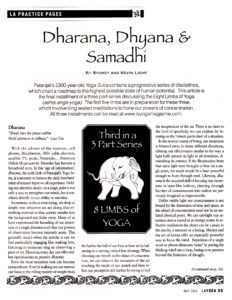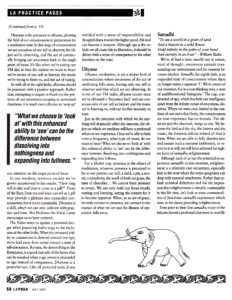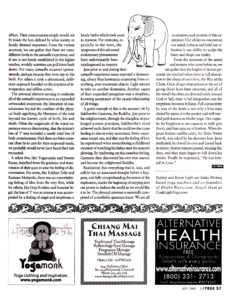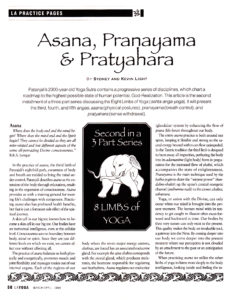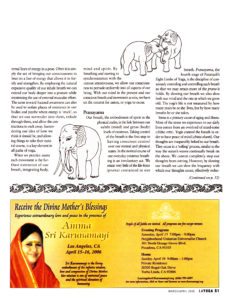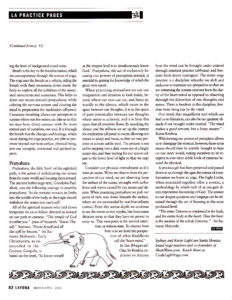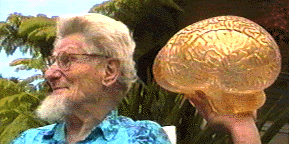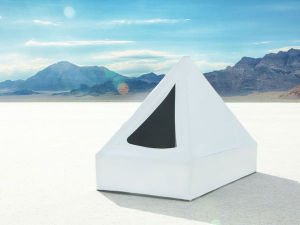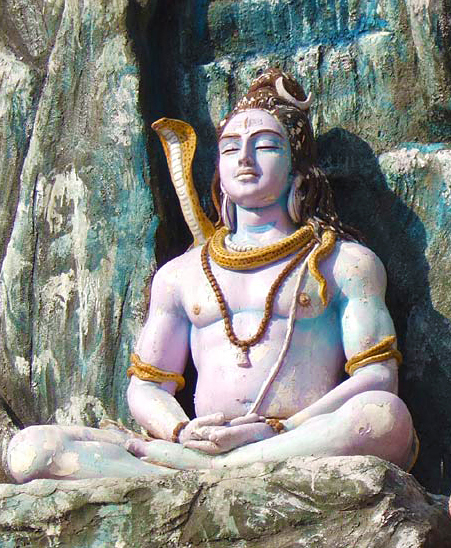Tag Archive for: Yoga
HOW TO FLOAT:
It’s simple. Get naked, get in the tank, stop moving. The water, super-saturated with 1000 lbs. of Epsom Salts, and slightly above body temperature, does the rest. One of the best things about the float tank is that it requires no particular experience, ideology, or belief system. In fact, aside from allowing yourself complete repose, it is best to just let go of any preconceived ideas of what will happen. Experiences run the gamut from intense, drug-free lucid dreams to profound mental and physical rest. Every float is unique. However, what is certain is that while bobbing weightlessness in deep dark and quiet, a visceral “re-set” button gets pushed, amplifying and embedding any intention or practice you might already have.
While many of us dither away precious energy arguing over opinions and convictions, the floater enjoys a welcome respite from thinking altogether. Floating works best if you simply don’t try to do anything at all.
John Lilly, the inventor of “sensory deprivation tanks”, always spent the first fifteen minutes or so of his float sessions consciously relaxing every muscle in his body. After that, he simply remained as present as possible. (Please also see Part 2 ~ History)
WHO FLOATS?
Floating has become a creative catalyst for the process of many artists and innovators. Extraordinary minds as diverse as Richard Feynman, Buckminster Fuller, Aldous Huxley, Alan Watts, and Graham Hancock have found floating useful. Actors such as Jim Carrey, Jeff Bridges, and Susan Sarandon, are devotees of sensory deprivation tanks. Comedian Joe Rogan has one at home and touts his tank as a cognitive enhancer, think tank, and psychotherapist all rolled into one. However, most new adherents are regular people looking for a reprieve from their hectic lives and a chance for some deep, uninterrupted, introspection.
WHY FLOAT?
Bobbing in the timeless sphere of a float tank causes all the neurological conduits in your body to redirect away from sensory perception, instead focusing that energy towards mending and rejuvenating cells and tissue. The deep mental quiet that results from removing visual, auditory and tactile stimuli allows a deeper level of brain function to come to the fore of consciousness. Studies have shown that floating can ease depression by working, according to author Michael Hutchinson, “against over-activation of the parasympathetic response by causing the body to release certain natural antidepressant and euphoria-causing neurochemicals, such as the endorphins. At the same time, floating powerfully reduces overactivation of the sympathetic, fight-or-flight response.”
The creative, intuitive, right hemisphere of the brain becomes dominant during a float-session and the rational, left side of the brain, gets a complete rest. The ensuing regular waking hours are more balanced as the flow of information between the two hemispheres remains enhanced. High conductivity between both sides of the brain, is a trait shared by many geniuses as well as spiritual adepts. Out-of-body experiences, astral travel, and hallucinations are also not uncommon (see Part 1). Some people already practicing yoga have reached the most expanded level of meditation they’ve ever known short of retreating to a secluded ashram.
I have found that post-floatum, decisions that have been hard to make (usually because I was trying too hard to “figure it out”) often smoothly give way to clear choices. Plots for stories, financial ventures, how to balance family responsibility versus my artistic life, all became less like onerous chores and more like fun.
Conceived in salty water, we spend our first 9 months floating in amniotic fluid. Our bodies then remain nearly 3/4ths saline solution throughout our lives. Indeed, possibly all life on Earth evolved from the dark and briny deep, so it seems intuitively correct that it might be good for us to steep ourselves in salt water and stillness whenever possible.
When you step into a sensory deprivation tank clothed in only your birthday suit, you become vulnerable to yourself alone… but also completely safe. The ego is immediately removed from this practice. Your job, car, clothes, diet, beliefs, computer and phone, have little significance in the tank. During a float session, the external noise that we so often mistake for truth recedes from our waking consciousness like fleeing shadows. Pesky obstacles to higher consciousness like bad hair days and gravity are temporarily gone, leaving you alone with your deepest self.
Much of the chatter generated in our brains gets triggered by stuff we see. This is commonly called “monkey mind”. The constant mental, sub-rosa, potpourri of images, memories, worries, and 1001 mental associations, judgements and attachments… plus a lifetime of conditioning.
A person walks into the room with sandy hair and blue eyes, and some part of your brain categorizes them with all the people you’ve ever come across with those same characteristics. Holidays also bring up deeply rooted memories of all holidays past, and what occurred during them. This in turn informs your expectations and desires for what should or should not be happening in the present and future. It’s an endless cycle of pattern recognition. Every second, whatever you are doing, your brain is attempting to catalog current and predict forthcoming experiences; helpful for survival at some level, but it can also cause us to get stuck in past interpretations, keeping us from fully living in the present moment. The float tank experience allows you to quickly shed many layers of physical and mental conditioning, to find… YOU.
Floating works best when you stay as motionless as possible while in the tank, allowing the body and brain to come to a complete stop. The ideal is to keep yourself somewhere between sleep and waking. Entering a prolonged hypnagogic state of consciousness is very effective all on its own, and can profoundly alter one’s mood, life perspective, and physical health for the better. But float tanks are also highly conducive to accelerated learning techniques such as subliminal recordings, verbal cues, or in some cases audio/visual images. Many people have ended bad habits or negative neurotic patterns after only a few float sessions.
HOW DO THEY WORK?
How exactly, does floating in water super-saturated with Epsom Salts, facilitate beneficial changes for so many people? How does something somewhere between a bath, a meditation, and hiding in a wet storage locker, become one of the greatest modern tools for personal transformation? The answer lies to a large extent with the creator of the sensory deprivation experience, John Lilly. (Please see Part 2 ~ History), a peerless and fearless explorer of the outer realms of human experience.
Water amplifies frequency. This is well-known by anyone studying aquatic animals such as whales or dolphins and their sonar communication. What is less understood is how water conducts more subtle frequencies, the ones too fine spun to hear with our physical ears. It appears that soaking in a sensory deprivation tank conducts neurological and psychological frequencies more efficiently than in air, and “cleanses” them at the same time. This also gives credence to theories of our aquatic origins.
Apart from Lilly-esque adventurers in expanded consciousness, floating has also proven to demonstrably speed recovery from surgery and stress injuries. Floating weightless removes all strain on the body imposed by the continual pull of gravity. Many people living in big cities have corrosive adrenalin constantly coursing through their bodies, the by-product of non-stop stress. Floating immediately alleviates pain and reduces stress damage to our bodies.
TYPES OF TANKS:
Current models of float tanks now run the spectrum from rectangular boxes the size of portable storage lockers, like Samadhi Tanks (the first tanks made for home use and with Lilly’s personal advice), which sell for around $8000); to walk-in room-type units or even Venus de Milo style, shell-shaped fiberglass pods (which are selling on eBay for $40,000). A very affordable tank, called the Zen Tank, has just come on the market, going for less than $2000.
Whatever style you find yourself in, all are usually filled with around 1000 lbs of Epsom salt-saturated water kept at slightly above body temperature, allowing you to bob on the surface as effortlessly as a ‘Lilly’ on a pond. Free from the effects of gravity, and with the demarcation between skin and water barely discernible. Almost everyone reports sensations such as moving through vast space, or even flying. Some people feel as if they are slowly spinning, or positioned upright instead of prone, even though the pods are too small to actually turn around in, and the water is usually no more than twelve inches deep. It seems utterly paradoxical that by entering a small, enclosed space you can experience being delightfully unbound, something akin to gliding in a weightless, extended savasana, (rest pose after yoga practice). Even the most claustrophobic have experienced a buoyantly unrestricted feeling inside the pods. In fact, many people (myself included) have lost their claustrophobic fear altogether. You can even drift into sleep. If, by chance, your head turns too far, the salty water in your eyes will wake you immediately.
MY EXPERIENCES:
Many adherents to floating have discovered that the one to three-hour float sessions help them dissolve stress, end chronic physical pain and can unravel long-term psychological knots. The great revelation for me has been the heightened creativity that seems to flow from my psyche after every float. Many people have reported quantum leaps and “aha” moments while floating or just after. My experiences have included a couple of waking, lucid dreams, a lot like hallucinogens but with zero angst or loss of bearings. (See Part 1 Experience.) But mostly my experiences have been more subtle; deeply restful, rejuvenating and healing. For up to five days after floating, I have noticed a sharpening and widening of my perception, insight, and cognitive synthesis, even my sense of smell and hearing become greatly enhanced. Hatha yoga, smart drugs, and sitting meditation, all great, do not compare.
REPORTS AND STUDIES HAVE SHOWN THAT FLOAT TANKS BENEFIT:
1. People who “cannot get still”, who have ADHD, or any attention issues. Many find themselves able to focus more clearly and deeply than ever before.
2. Floatees increase their Theta brainwaves, (4-7 hz); (see chart below) slow cycling but high-frequency brainwaves which coincide with the hypnagogic state we experience just before falling asleep and just before fully waking. Theta brainwaves are also closely linked to creativity, super-learning, meditation, as well as visionary experiences and quantum leaps of understanding.
3. Hemispheric and whole brain integration increases the ability to synthesize and understand new ideas. The active Alpha state (see chart below), while necessary and useful, can also block our connection to the vast supra-conscious well of knowledge and wisdom.
4. Increased feelings of self-confidence and self-mastery.
5. Alert, conscious Theta states are tremendously helpful to artists, writers, techies, entrepreneurs, and anyone trying for creative breakthroughs.
6. Sleep disorders are greatly helped. In fact many people achieve the deepest, most rejuvenating sleep experienced in years after floating.
7. Consciously cultivating slower-cycling brainwaves (in other words learning how to stay in a prolonged Theta state without falling asleep) allows the brain to cleanse subconscious memories and feelings, while upgrading the software at the same time. It also seems to help one’s relationships in general. Psychological disorders and neurotic tendencies can often be erased after several sessions.
8. Epsom salts contain a high level of Magnesium, which is a very common deficiency. Magnesium is best absorbed via the skin. While floating, a large measure of usable magnesium gets absorbed through the skin, while also helping to draw out toxins.
9. For reasons not completely known, floating causes the brain to release a large amount of endorphins. The floaters “high” seems to last anywhere from 48 hours to 2 weeks.
10. Post-operative recovery and pain relief are greatly accelerated.
PLEASE SEE:
Float Tanks ~ Part 1 Experience
Float Tanks ~ Part 2 History
Places To Float:
Highly Recommended:
LA Float Center 818-914-4887
Floatation.Com lists many places to float worldwide:
http://www.floatation.com/wheretofloat.html
Dunk In, Tune Out, and Float Away. I woke up one day to find that my daily life had grown electronically cacophonous. Multiple devices that I never turned off were keeping me hooked to instant updates about family, friends and the general diaspora; not to mention a deluge of news, social media, and hawking. My “break” from working on my computer was to open Facebook or the news. When I finally looked up from my iPad, faces were going by in the crowd, and everyone was looking down at their phones. People were texting even while crossing busy intersections; checking their messages during movies, and peeking at their devices during the course of normal conversations. Had I become one of them? I wondered. All of us (and me too), toting our noise with us wherever we went, staring at little blue screens, slaves to technology. When exactly did “sharing” become less of a selfless act, and more of a narcissistic one? “Watch me do something that you are not doing”. If you are not photographing, “sharing” it, and getting 20 “likes”, did it really happen? This was extreme disconnection from the present moment, and Ekhart Tolle was nowhere in sight.
Lest we become beleaguered shells run about by a constant barrage of e-babble, it is necessary to invest real time in some form of self-induced stillness. Also, it’s pretty much mandatory if you have any wish to hear the still, small, inner voice of Truth. Not to mention for the sake of your sanity, health, creativity and even everyday decision-making. Being “constantly connected” is fun, but It can also start to steal your soul. I knew I had to do something.
My own meandering quest for inner stillness has taken me down some interesting paths, with varying degrees of “success”. I’ve chanted mantras until I couldn’t remember my own name, bent my body into Cirque De Soleil Hatha yoga poses, done Holotropic breathing until I hallucinated, and those are just some of my more mainstream consciousness-raising experiments. Learning how sit still and meditate has ironically been the biggest challenge of all. It turns out that besides the ambitious goal of spiritual enlightenment, meditation is simply good for our over active, reason-stuffed minds. My own personal best breakthrough as an adult came after a ten-day silent Vipassana retreat. But that was back in 2011. I needed a practice that I could do without becoming a temporary acetic or going nuts. Something gentle that I could fit into my daily life.
I’ve known about “sensory deprivation tanks” for at least the last fifteen years, or so I thought. Even though I had heard about many of the touted benefits (deep meditation, accelerated healing and drug-free magical mystery tours), I still secretly wondered, why would I (or anyone else for that matter) want to go and bob naked for 60 minutes or more in a pitch-dark, womb-like pod filled Epsom salt-saturated, warmish water? It sounded just a little alarming.
Cut to 2014, when our friend Randall casually mentioned that he’d been going to a float tank to help heal a neck injury after a bicycle accident. A little “ping” went off in my stressed-out head. The silence, weightlessness and rest that he described suddenly sounded a more like a vacation and less like a wacko science experiment. But where to find a tank and get my feet wet, so to speak?
If you wanted to try floating ten or more years ago, chances are, (even in trailblazing LA), you probably would have had to wheedle an invitation out of your best hipster friend to use his backyard unit, secretly hoping he’d recently changed the water. Nowadays, like the next big wave of the mainstreaming of yoga and meditation, there is a good possibility that a pristinely clean, well-maintained “float center” has cropped up somewhere near you.
Looking on-line, I quickly found that no less than three float centers had opened in the greater LA area, and in fact they are popping up all over the USA, Canada, Europe, Australia and the Netherlands. Not your neighbor’s grungy tank, these current models are sleek, with high-tech filtration systems. Many of the new float centers are more like luxury spas, catering to people of all ages for all kinds of reasons. A lot of these offer opulent touches like meditation music piped directly into the units, as well as optional pastel lights to ease the sudden transition from traffic and mall shopping to complete darkness and silence. Some, (like LA Float Center in Woodland Hills, CA) even have oxygen bars with fruit or mint-tinged oxygenated air to inhale post-float.
When the need arises, the technology will come. Obviously the ‘Information Age’ has added a whole new rung of stress to the ladder. Research has shown that floating alleviates chronic pain and stress-related issues. It is well-documented that floating helps free people from compulsive
disorders, such as over-eating and other addictive behavior. It also accelerates healing, increases self-confidence and fosters general well-being. Not to mention the occasional drug-free, out-of-body experience. All by, well… doing absolutely nothing for 90 or so minutes in a weightless environment.
Do they really work? What is it like to float? The only way to find out was to do it.
OUR FIRST FLOAT EXPERIENCES:
Did I mention that I was claustrophobic? I do not like small elevators. Standing in my closet finding clothes makes me anxious, and the first time I heard about the float tank, I said to myself, “Ha! Not EVER gong to do that.” Tight rope walking across the Grand Canyon seemed like it would be a more likely scenario than me getting inside a salt-water filled, completely sound and light-proof, travel case for sensitive marine life samples.
However, I remained cautiously curious. My yogic experiments have at least taught me what it feels like to finally let go of one’s tangled thoughts, if even for a moment. During those rare, fleeting flashes of clarity, bliss, and quantum leaps of understanding, I have always made a pact with myself to find ways to get even more unknotted. I know enough to at least know what seasoned meditators are after; if one can enter a condition of waking dreamlike stillness, it has the power to transform your life and help you go beyond the limited notion of self. It is an extremely liberating state. So, when I found that a float center had opened nearby, I did the courageous thing and booked an appointment for my husband.
I went along too, not sure until the last-minute that I would actually get inside the thing. The first float is usually a kind of orientation to the process, the unconventional wisdom being that you need to go a few times to get the hang of it. We both chose some beautiful, Indian style, meditation music and entered our private rooms. Once inside I beheld what looked like a fiberglass mock-up of a Star Fleet Shuttle filled with water.
You have a few minutes to shower off before entering the pod. The filtration systems are very good, but it’s essential to wash before entering to keep oils out of the tank, and then afterwards to remove the salt solution from your skin. Earplugs serve to further quiet the experience and keep salty water from seeping into your ears.
Almost immediately, my husband opted for total dark and quiet (he reported to me afterwards) finding the music and light a distraction. Not quite as intrepid, I lay back in the water and quickly pressed the button to turn off the pastel ambient light, but left the music playing. As I began to relax in the dark I felt my body start to adjust to weightlessness.
At the same time, I experienced odd, violent itches on my neck and legs which seemed too deep under my skin to have anything to do with Epsom
Salts. There was an initial disorientation as my mind grasped for “things” to hold onto. Every noise seemed bizarrely loud; my heart thumped like a shaman’s drum, my breathing sounded like Darth Vader, and the music was almost painful as I could hear every note and beat with incredible clarity. Deprived of outer sensory play, my mind raced to “think” about things…anything. Am I hearing a clarinet? Did both my grandmothers have blue eyes? I saw every detail of a red Flexible Flyer sled I had when I was ten. Random images from childhood flashed across my brain with no apparent connective tissue. My neck and shoulders felt very strange and somewhat out-of-joint. I interlaced my hands behind my head as the helpful person at the front desk had advised us. Eventually, the odd sensations and racing thoughts subsided. Layer after layer of high alert tension peeled away like skins off an onion. The space around me suddenly expanded out as if for thousands of miles. Far from claustrophobic, I felt a tremendous sense of freedom, like flying. Even in the blackness I was sure that I could see shining stars. Euphoria.
DIMENSIONAL TRAVEL:
Suddenly, I clearly felt and saw myself swimming up towards the surface of a huge body of indigo-colored water. I realized immediately that I was able to breathe even whilst submerged and felt no lack of oxygen. My husband swam next to me as we rose to the top together, finding ourselves in a beautiful, but totally alien place. The vast, violet sky around us was dimly lit by a golden orb that was like a very bright full moon in its luminescence. A pervading azure glow danced off the surface of gentle, lapping water, and touched the entire
landscape. Enormous flowering stalks, the size of eucalyptus trees but with bright dewy, succulent petals, grew straight out of a vast lake. These flower-trees were everywhere, resembling aloe plants, but soft as rose petals to the touch. We hovered in the water for a bit, looking all around. There was land nearby, but I felt no urgency to swim to it. Unusual creatures, that looked something like manatees morphed with lions, swam near us. They were very friendly and curious, coming close up and nuzzling, regarding us with large, soft eyes. About a quarter of a mile away, on the land, there were dwellings or temples made of white stone, shining iridescent in the half-light. I asked my husband if he knew what this place was. He replied that we were on a planet about midway between Earth and the galactic core. He said there were “so many wonderful places” he wanted to “show” me. I didn’t question how he knew this. It seemed that we were “us”, but in a different place and time where he possessed a great knowledge of things I knew nothing about.
I was completely stunned by this vivid vision, similar to a lucid dream, but I was not asleep! The sights and sounds were occurring with absolutely NO plant or chemical enhancement. I wanted to follow the thread of this enchanting and beautiful waking dream. I wished to go to shore and look around, but as soon as I tried to cling to it, stay on that plane of existence and deliberately explore, it vanished.
My neck and shoulders had relaxed considerably by this time and I felt that places of stuck energy in my body and psyche were being “shown” to me by an intrinsic intelligent force flowing through my body. My neck in particular held a solidified tension and muggle-type crispiness. I found that by simply focusing on a choked area, something beyond my rational understanding went to work on it, unraveling the thicket of crossed nerve wires, stuck emotions, and heavy caffeine levels. It was somewhat appalling to bear witness to how compacted certain areas of my body really had been. I had a certain amount of obviously misplaced feelings of immunity to these kinds of stresses because I practice yoga and swim. Alas, once inside the tank, I understood that my spine was more like a slinky pressed into travel mode than a serpent goddess unbound. I was also able to witness the level of unnecessary vigilance my left brain (logical, time-oriented), exerted over my existence in general.
It seemed like only minutes had gone by and my hour and a half session was up. However, my appetite was thoroughly whetted for this new experience, albeit with heavily salted water. My husband, less prone to effusive excitement, especially over anything that takes place in a salon-type atmosphere, seemed quietly elated and a nagging issue with his hip was drastically alleviated.
Afterwards, the known world felt smoother and somehow less noisy. Immediately following my float, choices made in conversation, relationships, creatively, business or even shopping for groceries, were on target. I was “in the flow,” effortlessly led to the right motions and words at the right moments. It was only later on that I realized the shift in my state of mind from floating affected everything I did for the better. The friction was gone! Many of these effects lasted for at least a week, tapering off slowly. After two weeks, I felt the need to get back to the tank as soon as possible.
YOUTH IS A RELAXED BRAIN
I can only surmise that the cross-current of external events and mind-chatter takes us further and further from our authentic responses. Our surface, ego-mind begins to take over, making so-called “rational” decisions. Gradually, over the course of our adult lives, our choices get increasingly made based on information from external noise, and not from internal wisdom. When you completely quiet all that babble, even for short spans, you are able to listen to the sound of your own truth. Youth itself might be defined as the state in which your natural mind has not yet been polluted by outside influence. This is not in any way meant to dismiss education, learning and experience: rather to understand the stress placed upon us by faulty assimilation of competing data over a lifetime. Unable to hear our own genuine wisdom, we eventually loose contact with the sureness and courage of our youth. If there are no periods of complete silence, the body/mind will never fully digest the huge meals of information being sent its way. This is more true than ever in the ‘information age’. Consequently, many people suffer from prolonged intellectual and psychological “indigestion”.
No matter what you think you think, the real voice coming out of pure quiet from your core, always knows what is best for you. There are other ways to achieve this state of mind. Sitting meditation, hatha yoga, chanting, drugs and near death experiences, are some of the methods people have employed to profoundly quiet their minds. I tried all the above, except, thankfully, the last and have found that floating is the most effective method to get “there”, with the least amount of downside.
I am still plugged in to my many devices and communication systems. I admit it, I am an information junkie and I love gadgets. These days, as often as possible, I get into a float tank, immersing myself in silence for up to three hours at a time, and I emerge reborn. It is the greatest balancer for this noisy age that I’ve found short of flying to India and trekking to an ashram in the Himalayas.
Since that first hypnogoic vision, I have not experienced dimensional travel, although I fervently hope it happens again. Sometimes the real tank time seems monumentally uneventful. What always happens afterwards, no matter what, is at least a week or more of greatly enhanced clarity, general well-being and good decision-making. No other practice I have ever engaged in (and there have been a plethora of them) has ever given me such consistent and clear results. My advice? Get thee to a float tank!
“We had a Zen master who visited my lab once, and he asked to go in the tank for an hour. Most of his life he had meditated every day for four or five hours or more. And he thought the depth of meditation he reached in the tank was on par with a level he reached maybe once a year in his normal meditation environment—which was not exactly the middle of Times Square. He was amazed.” – Peter Suedfeld PHD
Please See: Three Part Series: THE LILLY PATH TO FREEDOM
Part 1 ~ EXPERIENCE
Part 2 ~ JOHN LILLY & THE HISTORY OF FLOATING
Part 3 ~ BENEFITS & TYPES OF FLOAT TANKS
Places To Float:
Highly Recommended:
LA Float Center 818-914-4887
Floatation.Com lists many places to float worldwide:
http://www.floatation.com/wheretofloat.html
This article is the second of an eight part series. It will present the second limb: yama (outward attitude and behavior) of the 8-fold path of Raja yoga.
It is a widely held Hindu belief that we are all just characters in one of God’s dreams. The eight limbs (angas) detail a methodical approach by which we can awaken within that dream. Ashta-anga-yoga has been specifically devised over many millennia with the sole intention of leading us to the highest possible state of human potential, God-Realization.
The Yamas: What We Think We Create
The yamas are the first limb of the eightfold yogic path taught by Patanjali. They consist of moral observances, which form the very foundation of spiritual discipline. We use the yamas as a guide for how we deal with the outer world, allowing our behavior and relationships to reflect an attitude of compassion. According to the Yoga Sutra there are five yamas:
- Ahimsa or non-harming
- Satya or truthfulness
- Asteya or nonstealing
- Brahmacarya or chastity
- Aparigraha or greedlessness.
These constitute the maha-vrata or ‘great vow’ of the yogin.
Ahimsa, nonviolence, means more than just the absence or negation of violence. Ahimsa is the practice of kindness in all thought, speech and action, developing a considerate attitude toward ourselves first and then extending benevolence outward in our behavior toward others. To effectively practice ahimsa we need to confront the source of violent impulses, fear and anger. Both fear and anger result in a contraction of our consciousness, isolating us from union with divine energy. Anger pulls a person’s vibration down and is an extremely wasteful expenditure of accumulated spiritual merit. In Buddhist teachings patience is recommended as a countermeasure for anger. However, being patient is much easier in theory than in practice, which is why they call it a practice.
Fear and anger often arise when we are not firmly established in the present. Fear stems from apprehension of a future event, while the source of anger is frequently an inability to let go of something in our past. Gratitude is a strong medicine for both. Negativity and gratitude cannot co-exist in the same space.
Perhaps the most formidable fear-obstacle we will inevitably face is our own death. Knowing that the end of this body is not the end of our existence is essential for developing the trust and surrender necessary to overcome our fear of death. The deeper we delve into our yoga practice, the more directly we can experience God and gain that knowledge.
Satya is the practice of truthfulness. It has been said that, “if you always speak the truth, everything you say will come true.” This means that truth is inherently powerful. When we only speak words we know to be true, we align ourselves with the vibration of creation. In meditation, when our mind is still, we can ‘hear’ the vibration of truth. It’s a feeling – a ‘knowing’ that is beyond words. For the yogi, the origin of truthful speech and action is truthful thought. Those who cause harm out of ignorance are less culpable than those who know what is right and still act otherwise. There is no value in knowing truth unless we act in truth.
Asteya addresses more than just non-stealing, it also means not coveting and not misusing the trust or confidence of another for our own personal gain. “The world has enough for every man’s need, but not every man’s greed.” (Mahatma Ghandhi).
In the west we tend to spend the first half of our life running around like crazed squirrels, gathering up as many nuts as we can find, not appreciating what is happening in the present moment. If we’re “successful” in accumulating, we then spend the second half of our life worrying about who’s going to take our nuts away. When we take more of the world’s resources than we can use, in a sense we are taking what is not ours. Giving away what we don’t need or use, recycling Mother Earth’s precious resources and performing acts of selfless service are all proactive ways in which we can cultivate asteya.
Brahmacharya is the containment of sexual energy for its conscious use. This is not necessarily instruction to choke off a natural urge from an outside-in approach, but to become aware of and contain all sexual energy down to the subtle level of thought. A person in a monogamous relationship or marriage can still be practicing brahmacharya if they keep their sexual energy within that closed circle. When we see a person, rather than negate our natural instincts, we can try to see them from the perspective of all of our chakras, not just the lower three. As yogis we aspire to look beyond the impermanent exterior to that which is eternal.
In the strictest literal sense, brahmacharya means the practice of celibacy. All of the yogin’s physical and psychic energy is directed towards the divine. Sexual energy is pulled upward from the lower to the higher chakras, fueling the spiritual growth and ultimate awakening of the yogi. Qualities in another person such as charisma, brilliance or artistry are in fact sexual energies transmuted. The yogic practices are designed to ignite and increase this energy, which by means of the yamas and niyamas, the yogi channels toward kindness away from ego.
Aparigraha, greedlessness, is a form of asteya and perhaps the most difficult yama for westerners to employ. It means ‘non-hoarding’ or not keeping more than one needs. To a sadhu in India, that would mean not possessing more than a loin cloth, a blanket and a bowl. To a westerner the line between “need” and “want” can often be very fuzzy
So how does a contemporary western yogi understand and practice aparigraha? Perhaps by giving away what is not being utilized. Our giving can also extend beyond the material so that we are not hoarding our caring or compassion for others either. It’s helpful to recognize all of energy as a flow; if one stops the flow of giving, one also impedes the flow of receiving
Through the practice of yama and niyama, we become channels for the good of the universe. Connecting with the truth residing in each of our hearts, connects us with all that is.
Loka Samasta Sukhino Bhavantu ~ May all beings be happy and at peace.
*{published Jan/Feb 2006 issue of ‘LA Yoga & Ayurveda Magazine’, by Sydney and Kevin Light}
This article is the first of an eight part series. It will present the first limb: niyama (inward moral observances) of the 8-fold path of Raja yoga.
The eight limbs of yoga (ashta-anga-yoga) expounded on in the 2,300-year-old Yoga Sutra compiled by Patanjali, are a progressive series of steps or disciplines, which purify the body and mind, providing us with the means to achieve direct experiential knowledge of God. They comprise a scientific system formulated such that the practice of each limb reinforces the others, ultimately bringing the practitioner to a state of yoga: union with cosmic consciousness.
The yamas and niyamas comprise the universal moral truths that are the backbone of every religion and spiritual practice. Although they are often misinterpreted as ‘shalt nots’ they cannot be effectively practiced in this way. It’s much more helpful to consider them as things that we ‘do.’ Rather than negate our behavior through censorship, it is a much more powerful practice to journey inward and address the impulses behind our actions.
Although the yamas are typically listed as the first limb of yoga, before purity can reflect in our actions it must exist in our thoughts. Therefore, the niyamas will be presented first in this article. Niyama, the second limb, has to do with purity of thought. Everything that exists has been preceded by thought. We are the co-creators of this reality.
The Niyamas: What We Think We Become
The niyamas address inner observance and self-discipline, how we treat ourselves. They lead to ‘right intention,’ which comes from the expanded perspective of doing what is best for all of consciousness, even at the expense of personal sacrifice. According to Patanjali’s Yoga Sutra, there are five niyamas:
- Shauca or purity
- Santosha or contentment
- Tapas or austerity
- Svadhyaya or self-study
- Ishvara-pranidhana or devotion to the Lord.
Shauca, purity, is important for both our inner and outer well being. Practicing good hygiene habits combined with asana and pranayama remove toxins and cleanse us inside and out. In a physical sense it means purity of body as well as purity in what we nourish the body with. This includes what we eat as well as how the food is obtained.
Perhaps even more important than the physical aspects of shauca is the purity of our thoughts, actions and deeds. Impure thoughts can be cleansed through the practice of bhakti or devotion, while faulty reasoning and perception can be purified by svadhyaya or introspective self-study. With a clear and lucid mind we are better equipped to practice the other limbs of yoga.
Santosha, contentment, is the means by which we free ourselves from the winds of desire. The practice of this niyama has become even more crucial in today’s consumer-based society where we have been conditioned since birth to believe the key to our happiness lies in some external thing. True and lasting happiness can only be attained as an internal state of being. So how do we go about ‘cultivating’ contentment?
We can set the context by practicing acceptance and gratitude. Acceptance – saying ‘yes’ to what is in this moment; gratitude – recognizing the grace we have already received. As we do, contentment and joy naturally arise.
Tapas refers to any austere practice requiring a burning, self-disciplined effort resulting in the purification of our character. Patanjali states in his Yoga Sutra that tapasya leads to perfection (siddhi) of the body and the senses. Tapas are those situations in life, contrived or naturally occurring, from which we can push off of, in order to propel ourselves higher. Whether engaging the body, speech or mind, tapasya entails a sustained and regimented endeavor to connect with the divine, while all obstacles are burned up and fall away.
Pranayama and asana are voluntary forms of tapasya. The Buddhist practice of vipassana is another example of an intentional tapasya, where the practitioner takes a ten day vow of silence and sits in meditation for eight hours a day. A disability such as a stroke can become an involuntary tapasya if the practitioner is able to adopt an attitude whereby they can use that condition to move closer to God.
However, the austerities, hardships, which help us to discern body from spirit, should not be taken to an extreme. The Bhagavad-Gita speaks out against exaggerated asceticism, which involves mortification of the flesh and ignores the fact that the Lord (Ishvara) resides within the body.
Svadyaya, self-inquiry encompasses all learning, reflection and experience, which result in a greater understanding of our own fundamental nature. It includes the study of sacred texts or any books that resonate with us in a way that moves us toward the light. Self-study is perhaps the most crucial of the niyamas because at some point we must all reconcile to the fact that although higher consciousness is within everyone’s grasp, no guru, priest or other person can do the work for us. Sri Ramana Maharshi, the great Indian saint who left his body in 1950, advocated self-inquiry as the primary proponent of sadhana (daily practice). He guided his followers toward freedom from ego-illusion by instructing them to always look to the source of the “I-thought.”
The Yoga Sutra says that as we progress on our path of self-study we develop a connection to the universal Divine laws and the spiritual masters who revealed them. Mantra is a way of strengthening our Divine connection, so svadyaya also includes kirtan and the repetition of mantra.
Ishvarapranidhana, devotion to the Lord literally means, ‘to lay all of our actions at the feet of God.’ It requires that we detach from the outcome of any endeavor, just do our best and leave the rest to a higher power. Ishvarapranidhana addresses ‘right intention.’
Is the source of our motivation behind a particular action ego-driven or is our intention selfless? Ram Dass, a spiritual pioneer who is, and has been, instrumental in introducing Eastern spirituality to the west, often speaks about dis-identifying with our ‘role’ as helper when performing acts of service. When we perform a good deed and there is nobody there as witness, did we acquire karmic merit? When a tree falls in the forest and there is nobody there to hear it, did it make a sound? The answer to both questions is a resounding ‘Yes,’ because both involve a transfer of energy, which according to Sir Isaac Newton can neither be created nor destroyed, but only transferred or transmuted.
Besides, Presence is always there as witness. In fact, when we perform acts of service with the knowledge that nobody will ever know, it is far more likely that our intention is pure.
Through the practice of yama and niyama, we become channels for the good of the universe. Connecting with the truth residing in each of our hearts, connects us with all that is.
Loka Samasta Sukhino Bhavantu ~ May all beings be happy and at peace.
*{published Jan/Feb 2006 issue of ‘LA Yoga & Ayurveda Magazine’, by Sydney and Kevin Light}

